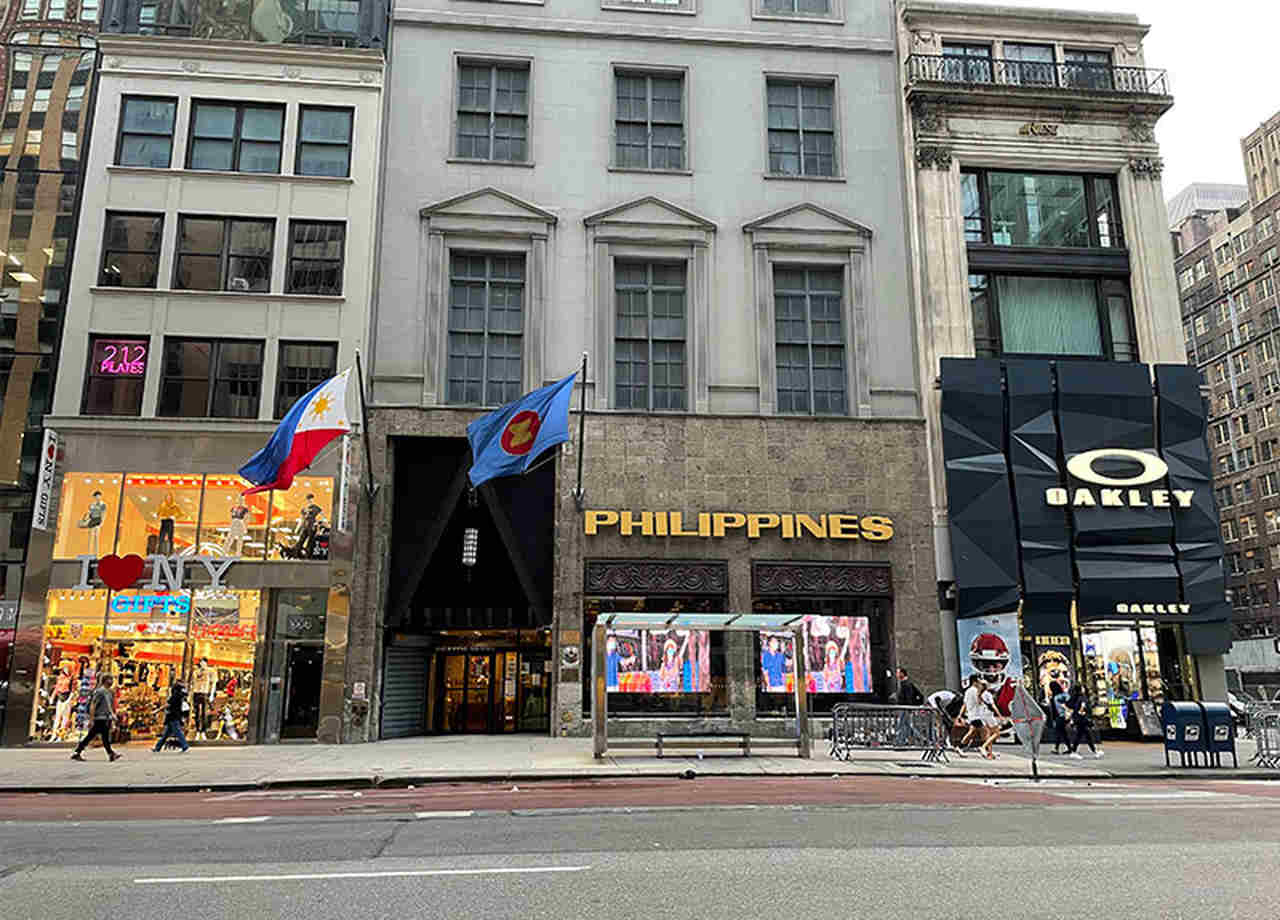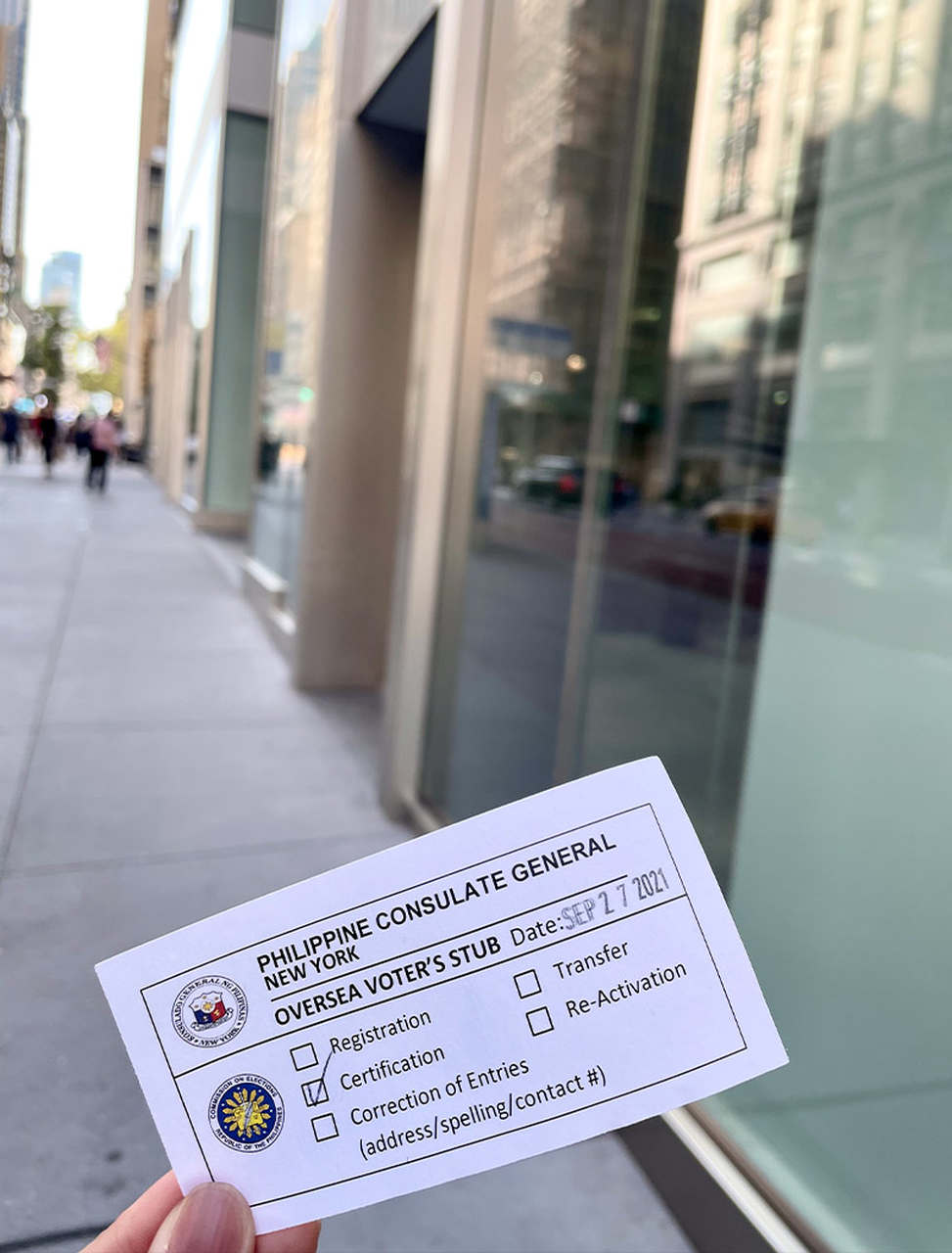I Registered To Vote Overseas For The First Time-This Is How I Did It
It’s only been around a month since I moved back to New York for work. A lot has gotten lost in the mix of moving into a new apartment and starting a new job. And if not for the occasional post on my social media feed about the Philippine elections, I would have completely forgotten that the window for voter registration was closing on September 30, 2021.
I was already a registered voter in the Philippines and have voted ever since I was first eligible, which was during the 2016 elections. But I was going through so many things and I was also partly in denial that I wouldn’t be coming home to the Philippines until at least July 2022. So it didn’t dawn on me sooner that I still needed to register so I could vote for the Philippine elections in New York in May 2022. It was just on the 21st when I realized. I only had nine days left to register—or actually, seven days because the Philippine Consulate General in New York is closed on weekends.

I immediately messaged a friend who had also just moved to New York and asked if she wanted to take time off work within the next week so we could register.
What do you need to bring for the overseas voter registration process?
I first checked the website of the nearest Philippine Consulate General, which is on Fifth Avenue here in New York. It’s best to check other Foreign Service Posts to see where you can register in your current location.
I’m lucky enough to know a few Filipinos who also live in New York that I could ask about what they did to register. They kindly informed me that while the Philippine Consulate General’s (PCG) website says that appointments are required, they just walked in with their passport and a photocopy of their passport.
I still tried registering for an appointment on the PCG’s website for an appointment but to no avail. There wasn’t even an option for setting up an appointment for overseas voting registration nor were there any free slots for any kind of service like SSS or passport applications. But the PCG website did answer some frequently asked questions which was helpful. Applicants have to bring the original copy and a photocopy of proof of their Philippine citizenship, which includes:
- Philippine Passport (with a photocopy of the data page only)
- Identification Certificate (for dual citizens)
- US Permanent Resident Card
- US Work Permit
- US Visa
- Seaman’s book for seafarers (with a photocopy of the data page only)
One helpful tip I got from a cousin who also lives in the U.S. is that it’s better to check your PCG’s Facebook page for more recent updates. Though personally, I didn’t check it anymore because I was set on just walking in and making it happen anyway.
What’s the best time to go?
The people I knew who got registered in New York went to the PCG in the middle of a weekday and told me that they were the only ones in line. This gave me a good gauge of what time I should go. My friend and I were supposed to go on the last day, which was a Thursday, because it was our least busy day at work. But we knew a lot of other people would be registering last-minute as well so we decided to go on Monday, September 27, instead.
We took a half-day off work and clocked out at noon so we could go to the PCG at around 2:00 p.m. But we weren’t able to take into account the time we needed to get photocopies of our passports and actually arrived at the PCG at around 2:45 p.m.
So it’s worth noting that while there are usually photocopying machines on-site when doing government applications in the Philippines, there weren’t any at the PCG we went to. My friend and I had to go to a nearby FedEx branch to have our passports photocopied which took a few minutes. It would be helpful to take this into account when planning out your day.
There were only around 10 or so people in line, which wasn’t that long. More people came in after 30 minutes. Some people we met in line got out of their undergrad classes early and decided to register on a whim.
What’s the process of registering as an overseas worker?
When we arrived at the PCG with our passport and a photocopy of the data page, we were given the Overseas Voting Form to fill out at the front desk. You can also download the form online from the PCG’s website.
We then waited for around 20 to 30 minutes until they called up our names. When you’re called, they confirm your personal details that you put on the form, input it into the system, and take your biometric information. The officer taking my information told me that I would simply receive my ballot in the mail.

After less than five minutes, they gave me an Overseas Voter’s Stub with the date and the kind of process I had done. It was a Certification, since I was already registered in the Philippines and only needed to certify that I would be voting in the U.S. Others are filed under Registration, Correction of Entries (for address, spelling, and contact number), Transfer, Re-Activation.
Notably, my friend’s stub was for a Registration instead of a Certification because her records said she was unregistered even though she already registered in the Philippines. She’ll be sending an e-mail to the Commission on Elections to confirm her registration.
All in all the process—without counting the time it took to photocopy our passports—took around an hour. It wasn’t that long of a wait. But even if it were, it would be nothing compared to fulfilling our duty to vote as Filipinos.
(COMELEC has extended the deadline for overseas voters' registration from October 1 to 14, 2021.)
***
Cosmopolitan Philippines is now on Quento! Click here to download the app and enjoy more articles and videos from Cosmo and your favorite websites!
Follow Ida on Instagram.
[ArticleReco:{"articles":["79430","79319","76221","78953"], "widget":"More from cosmo"}]
Source: Cosmo PH

Post a Comment
0 Comments